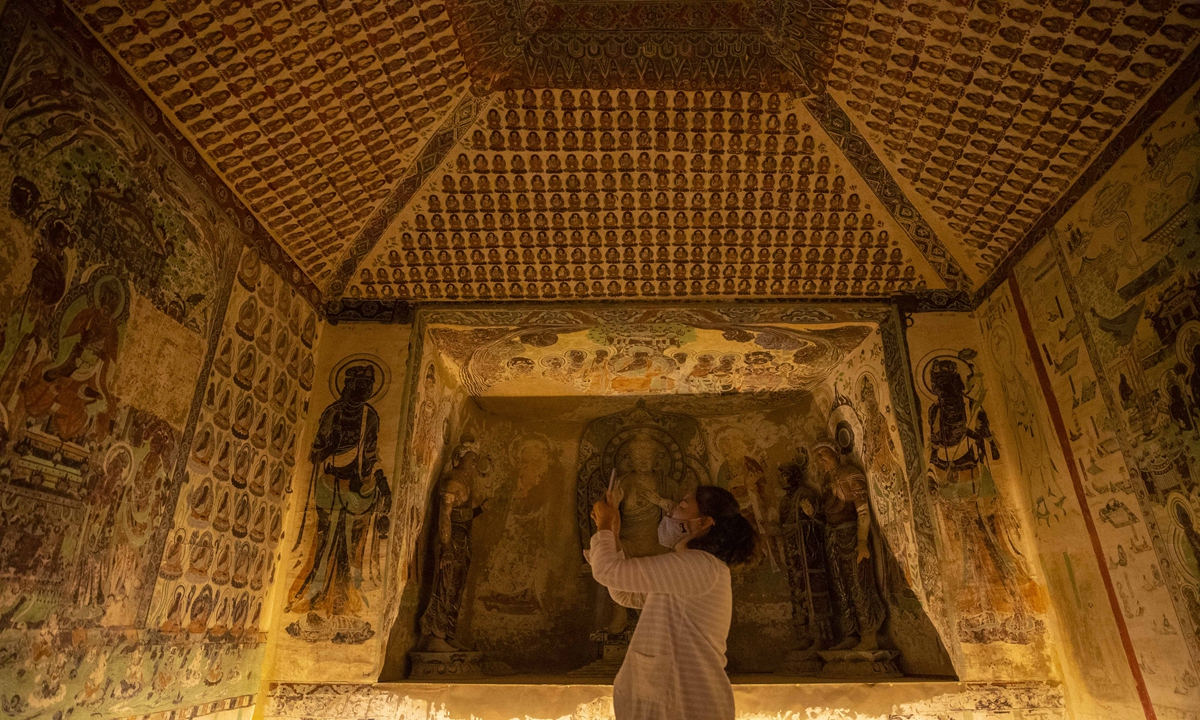
A visitor takes a picture at the grottoes arts exhibition displayed in a museum in South China's Hainan Province on Thursday. The exhibition has demonstrated the cultural elements from Dunhuang's Mogao Grottoes. Photo: VCG
A multi-field coupling lab on murals and ancient ruins protection has been officially put into use, according to Dunhuang Academy.
The lab aims to simultaneously simulate various conditions to which murals and ancient ruins are exposed so as to collect direct data for future research, said Guo Qinglin, director of the academy's protection and research institute.
Located in Dunhuang, Northwest China's Gansu Province, home to the millennium old Mogao Grottoes, the lab covers an area of 16,000 square meters. It mainly consists of three lab cabins that enable simulation of weather conditions throughout a year, such as windy, snowy and rainy days.
"The lab is adept at testing several tones of samples from ancient ruins like the Great Wall that have been exposed to the weather," Guo said, adding that traditional labs could only research on a small number of samples and are limited in the range of temperature and humidity and experimental time, so experimental results easily deviate from that in the practical environment.
Multi-field coupling lab, with the controlled environment on its merit, will play an important role in basic research of cultural heritage protection, as it is necessary to understand the deep-level mechanism of their degradation when we need to transform from rescue protection to preventive protection of cultural relics, Guo added.

